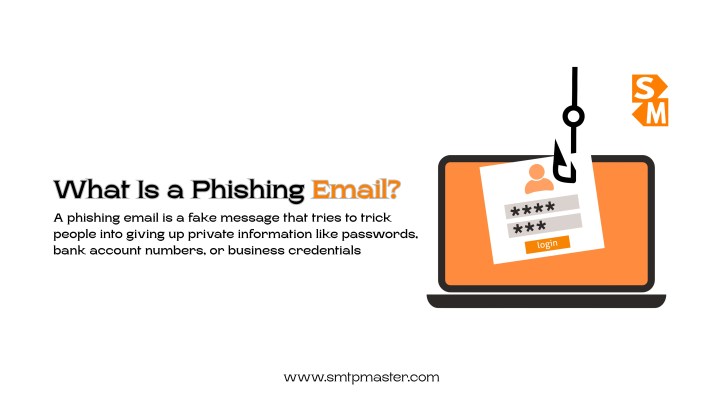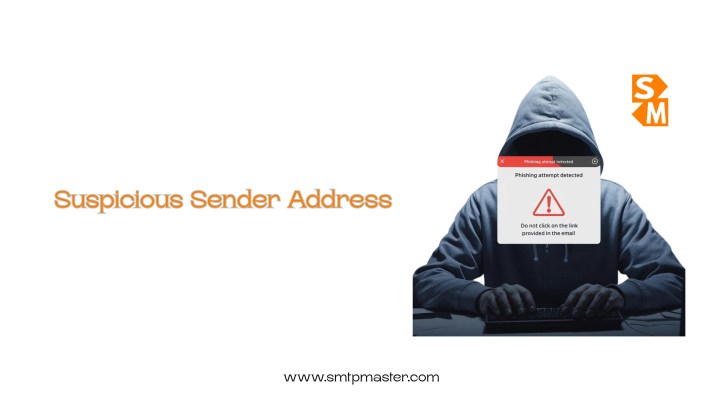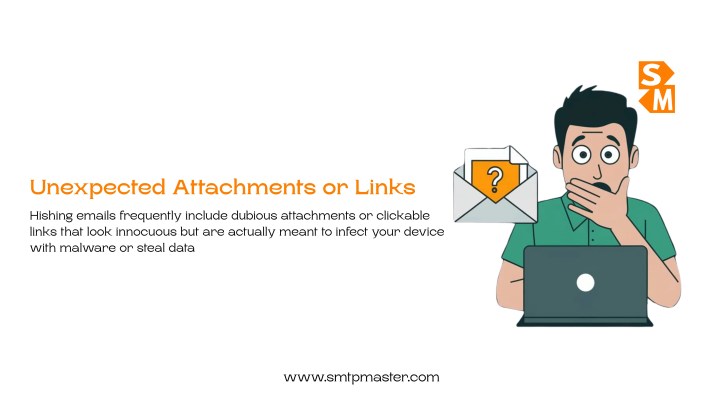Introduction
Phishing scams are among the most common and dangerous online threats in today’s digital world. Cybercriminals send fake emails that appear to come from trusted sources—like banks, government agencies, or well-known companies—to trick people into revealing personal or financial information. These deceptive messages can lead to identity theft, account breaches, and financial losses for both individuals and businesses. As phishing tactics continue to evolve in 2025, staying informed is essential. In this blog, we’ll share 7 Ways to Spot Phishing Email so you can identify warning signs early, protect your sensitive data, and stay safe from online scams.
Key Takeaways
- Phishing emails are false communications designed to impersonate trustworthy sources in order to steal financial or personal information.
- Always double-check the sender’s email address; scams are frequently indicated by minor spelling errors or free domains.
- Real businesses address you by name, so avoid using generic greetings like “Dear user” or “Dear customer.”
- The purpose of threatening or urgent emails is to incite fear and compel immediate action.
- To preview a link’s actual destination, hover over it instead of clicking on unknown attachments or links.
- Awkward wording, misspellings, and poor grammar are all clear indicators of dishonest communication.
- Reputable businesses never send emails requesting private information like bank account information, passwords, or OTPs.
- Keep an eye out for branding irregularities—phony domains, colors, and logos can reveal phishing attempts.
- Since phishing is responsible for more than 70% of email-based cyberattacks, security awareness is crucial.
- Your best defense is to remain vigilant and knowledgeable; always double-check before clicking or responding.
Table of Contents
- Introduction
- What Is a Phishing Email?
- Why Phishing Emails Are Dangerous
- 7 Ways to Spot a Phishing Email
1. Suspicious Sender Address
2. Generic or Unpersonalized Greetings
3. Urgent or Threatening Language
4. Unexpected Attachments or Links
5. Poor Grammar and Spelling Mistakes
6. Requests for Personal or Financial Information
7. Mismatched or Fake Branding - Conclusion
What Is a Phishing Email?

A phishing email is a fraudulent message designed to trick people into revealing sensitive information such as passwords, bank details, or business credentials. These emails often appear to come from trusted sources like banks, delivery services, or workplaces, using official logos and language to seem authentic. Cybercriminals craft them to create urgency or trust, prompting recipients to click malicious links or download harmful attachments. For example, you might receive an email claiming your bank account is locked and asking you to “verify” details on a fake login page. Once entered, your information is stolen and misused. Phishing emails remain one of the most common and effective methods hackers use to exploit human trust.
Why Phishing Emails Are Dangerous
Phishing emails are a major threat to both individuals and businesses. Cybercriminals use them to steal personal or financial information, access bank accounts, and compromise sensitive company data. These attacks can lead to financial loss, damaged reputation, and loss of customer trust. Once a hacker gains access to an employee’s email, they can spread malicious emails further, worsening the impact. Moreover, successful phishing attempts can harm your email domain’s reputation, causing future messages to land in spam. According to recent cybersecurity reports, phishing accounts for over 70% of all email-related cyberattacks—making it one of the most common and costly online threats today.
7 Ways to Spot a Phishing Email
Phishing emails are becoming increasingly sophisticated, but with a little attention to detail, you can identify them before it’s too late. Here are 7 ways to spot a phishing email and protect yourself from online scams.
1. Suspicious Sender Address

A phony or slightly modified sender address is one of the first indicators of a phishing attempt. To fool recipients into believing them, cybercriminals frequently use email addresses that closely resemble authentic ones. These addresses might appear genuine at first glance, but minor variations—such as an additional letter, number, or symbol—can expose their true identity.
For instance, a scammer may send an email from “support@paypaI.com” (spelled with an “I”) rather than the legitimate “support@paypal.com.” Addresses that end in free domains, such as @gmail.com or @yahoo.com, rather than a business’s official domain, should also cause concern.
Pro Tip: Before responding to a message or clicking on any links, always confirm the sender’s email domain.
2. Generic or Un-personalized Greetings
Another sign that an email is a phishing email is that it uses generic pleasantries like “Dear user,” “Dear customer,” or “Dear account holder.” Almost always, legitimate businesses with whom you already have a relationship refer to you by your full name or registered account name.
Phishers, on the other hand, use generic greetings to save time because they send bulk emails to thousands of recipients. The absence of personalization is a clear sign that the email is not authentic.
For instance, instead of beginning with “Dear valued customer,” a bank or online store would usually begin with “Dear John.”
Advice: Be wary of emails that don’t include your name, particularly if they also include dubious links or urgent requests.
3. Urgent or Threatening Language
Phishing emails frequently employ threatening or urgent language to coerce recipients into acting right away. Scammers are aware that panic can overcome reason, increasing the likelihood that victims will click on a malicious link or divulge private information without first confirming its legitimacy.
Phrases such as “Your account will be suspended today!” “Unusual activity detected—verify now!” or “Final warning: update your details immediately!” may appear. The purpose of these messages is to make you act before you think and to instill a false sense of urgency.
Advice: Reputable companies almost never ask for immediate email responses. Spend a moment checking the company’s official website or customer service if you receive a message that seems urgent or threatening.
4. Unexpected Attachments or Links

Phishing emails frequently include dubious attachments or clickable links that look innocuous but are actually meant to infect your device with malware or steal data. These links may trick you into clicking on them without giving it much thought by claiming to take you to an invoice, payment confirmation, or security update.
Attackers commonly employ masked hyperlinks or abbreviated URLs that appear authentic at first glance. For instance, clicking on a link that looks like “www.banksecure.com” could actually take you to a malicious website.
Advice: Never click on links or open attachments from emails you don’t recognize or expect. To view the link’s actual destination, always move your mouse pointer over it without clicking. Report the email as phishing and refrain from interacting with the URL if it appears dubious.
5. Poor Grammar and Spelling Mistakes
Poor grammar, misspellings, or awkward wording are major red flags in phishing emails. Reputable businesses rarely send out messages with obvious errors because they invest in professional communication. Phishing emails, on the other hand, frequently contain grammatical errors and strange sentence structures because they are written quickly or translated from another language.
For instance, you may get an email stating, “Your account has been suspended.” To fix right away, please click here. In addition to appearing unprofessional, these messages suggest that the sender may not be who they say they are.
Advice: Always carefully read emails; if there are numerous typos, erratic formatting, or odd wording, it’s probably a phishing attempt. Reputable companies communicate in a clear and professional manner, so follow your gut.
6. Requests for Personal or Financial Information
Requests for sensitive information, like your passwords, bank account numbers, credit card information, or OTPs, are among the most obvious indicators that an email is a phishing scam. Reputable companies never request private information by email, particularly banks, payment gateways, and governmental organizations.
To seem legitimate, phishers frequently pose their requests as “security verification,” “account recovery,” or “identity confirmation.” For example, a message stating, “We noticed unusual activity on your account,” may be sent to you. To protect it, please double-check your password.
Advice: Never send out financial or personal information via forms or links in emails. Before acting, check the company’s official website or get in touch with customer service via approved channels if you’re not sure.
7. Mismatched or Fake Branding
Phishing emails often imitate the look and feel of legitimate companies, using copied logos, brand colors, or templates to appear authentic. However, if you look closely, you’ll usually find small inconsistencies—such as slightly distorted logos, incorrect shades of color, or design elements that don’t match the company’s real branding.
Scammers may also use fake domain names in links or email addresses that appear similar but are not the official ones (for example, “amazon-security.com” instead of “amazon.com”). These subtle differences are designed to deceive hurried readers.
Tip: If something feels off, compare the email with a previous legitimate message from the same company. Check the logo quality, sender domain, and email layout carefully before trusting or clicking anything.
Conclusion
Even though phishing emails appear authentic, a close examination can always reveal the truth. You can identify these scams before they do any damage by keeping an eye out for little details like questionable sender addresses, generic greetings, urgent language, or mismatched branding. Keep in mind that no trustworthy business will ever email you for your passwords or financial information. You can guard against financial fraud, identity theft, and data loss by being vigilant, checking links, and avoiding unconfirmed attachments.
Being aware is your best defense in the current digital age. Always think twice before clicking, teach your family or team how to recognize phishing emails, and keep these seven tips in mind. Being cautious now will keep you safe tomorrow.
FAQ
A phishing email is a fake message that tricks users into sharing personal or financial information by posing as a trusted source.
Check for suspicious sender addresses, generic greetings, urgent language, and mismatched branding.
They can steal sensitive data, cause financial loss, and damage your or your company’s reputation.
Never click links or download attachments—report, delete, and block the sender immediately.
Verify email sources, use strong passwords, enable MFA, and stay alert to suspicious messages.
Oh! Still not using our email marketing service? Try Now!
Our Plans:-Yearly Email Marketing Plans and Monthly Email Marketing Plans.
FAQ:- (Click Here)
Contact our client care for additional Help


